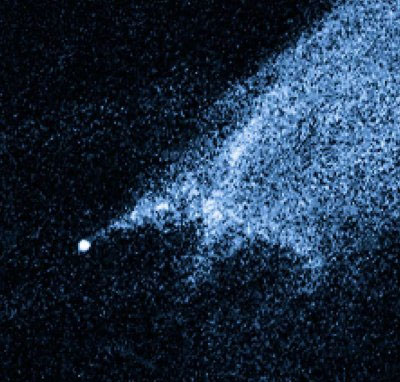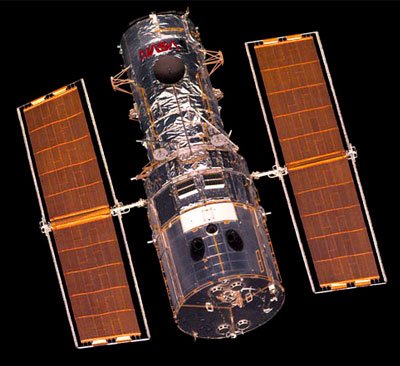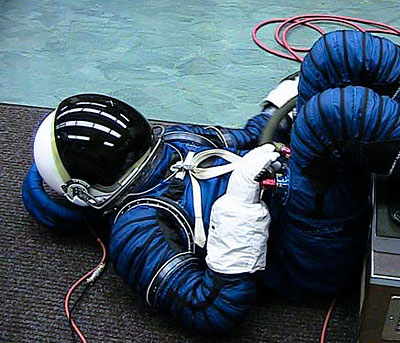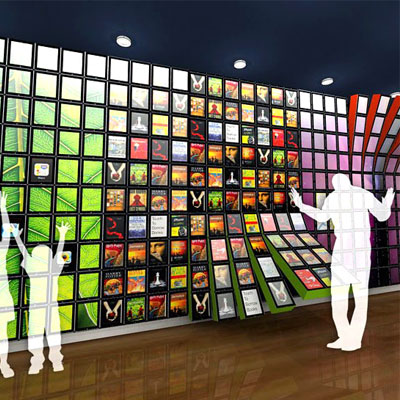 This week, Hubble has announce two amazing discoveries. In order to celebrate one of our most beloved spacecraft, we’ve dedicated this week’s Science Friday to the Hubble Space Telescope. See the most detailed view of Pluto ever, an asteroid collision, and learn all about Hubble’s humble beginnings. All this and more, plus our gadget of the week: the iPad(d) wall.
This week, Hubble has announce two amazing discoveries. In order to celebrate one of our most beloved spacecraft, we’ve dedicated this week’s Science Friday to the Hubble Space Telescope. See the most detailed view of Pluto ever, an asteroid collision, and learn all about Hubble’s humble beginnings. All this and more, plus our gadget of the week: the iPad(d) wall.
Hubble Captures Most Detailed View of Pluto To Date
This week, NASA released the most detailed set of images ever taken of the distant dwarf planet Pluto. The images taken by the Hubble Space Telescope show Pluto’s white, dark-orange, and charcoal-black terrain, which may be seasonal changes on the planet’s surface. Analysis shows that dramatic changes in color took place between 2000 and 2002. In that time, Pluto became significantly redder, while its illuminated northern hemisphere is getting brighter. These changes are most likely consequences of surface ice melting on the sunlit pole and then refreezing on the other pole, as the dwarf planet heads into the next phase of its 248-year-long seasonal cycle. When the New Horizons spacecraft arrives at Pluto in 2015, we’ll get an unprecedented look at the mysterious outer planet’s surface features. Check out the animation of the most detailed view of Pluto to date below.
Most detailed view of Pluto to date
Hubble Sees Asteroid Collision
Hubble is making headlines this week yet again. This time, the space telescope spotted an unusual x-shaped debris pattern and trailing streamers of dust that suggest a head-on collision between two asteroids. Astronomers have long thought that the asteroid belt is being ground down through collisions, but such a smashup has never been seen before. “This is quite different from the smooth dust envelopes of normal comets,” says principal investigator David Jewitt of the University of California at Los Angeles. “The filaments are made of dust and gravel, presumably recently thrown out of the nucleus. Some are swept back by radiation pressure from sunlight to create straight dust streaks. Embedded in the filaments are co-moving blobs of dust that likely originated from tiny unseen parent bodies.” Check out the image below and a full context version.

Hubble’s view of an asteroid collision
Spacecraft Spotlight: Hubble Space Telescope
The Hubble Space Telescope, launched in 1990, is one of the public’s most beloved space missions. Not only has it done great science, it delivers astonishing images of our universe like no one has seen before. It wasn’t always the pride and joy of NASA, however. When it first launched, it was billed to the American public as a glorified digital camera in space, and one that didn’t seem to work properly. The front page of Newsweek called HST, “NASA’s 1.5 billion dollar blunder.” But, Hubble eventually proved herself worthy by doing great science and delivering magnificent images back to Earth. Now, not a month goes by without a major discovery or advancement being made by HST. Last year, two new scientific instruments were installed on Hubble, including a new wide field camera, which has allowed even better quality images. Learn more about Hubble and her discoveries at http://hubble.nasa.gov.

Hubble, our eye in the sky
Fancy Modular Space Suit On the Way
Hubble may take the pretty pictures, but we want to get humans out there exploring the cosmos,too. To do that, we’re going to need functional (not to mention stylish!) space suits that allow astronauts to work more effectively. Pictured below is a prototype of the most flexible space suit yet, of modular design. The suits will use two different torsos combined with the one set of flexible arms, legs, boots and a helmet. One of the torsos is more flexible, designed for launch, reentry and emergency operations. Another more rigid torso is designed for cavorting around the galaxy, and it’s decked out with life support and communications gear.

New modular space suit prototype
Gadget of the Week: The iPadd Wall: The Next Generation of Digital Libraries
With the announcement of Apple’s new iPadd touch screen tablet device, touch screen technology is all the rage. This conceptual iPadd wall would allow users to interact will all kinds of media and act as a digital library at your fingertips – literally. The designers don’t go into great detail as to how the iPadd Wall would work, but just looking at the construct begins to reveal exactly how revolutionary the iPadd “could” be if used in innovative ways that Apple never conceived. By the way, you may have noticed my repeated misspelling of iPad. I’m lobbying for Trekkies to usher in a name-change for the totally Trek-inspired device.

The iPad(d) wall
#FollowFriday
If you are on Twitter, you know there are plenty of amazing people out there tweeting away. And, many of them are scientists! Every Friday I’ll be bringing you a new list of great scientists and techies to follow on Twitter. This week…
- @dvice: We love technology. We live for shiny new gadgets, momentous breakthroughs, and cutting-edge design. Basically anything that looks like it came from the future.
- @EarthPic: Earth Science Picture of the Day features over 3000 images that highlight the processes and phenomena that shape our planet. New image everyday!
- @MikeOkuda: Mike Okuda! Need I say more?
Science Quickies
Not enough science for you? Here’s a warp-speed look at some more science tid-bits that are worth a look.
- WIND robot system may usher in era of battle machines
- Cassini gets life extension to explore Saturn to 2017
TrekMovie’s Science Friday is an homage the the great NPR radio show Science Friday. Science Friday® is a registered service mark of ScienceFriday Inc.

Pretty cool pictures!
I like the new spacesuit in Trek Science color!
Aren’t you glad Hubble wasn’t scrapped?
And I want LCARS for my iPad! Hell, I even want it on my iPhone!
#2
Good thing it’s not red.
Hm, you didn’t get my email?
ESA news report quotes famous Vulcan LLAP
“Live long and prosper, Xanthoria elegans”
http://www.esa.int/esaCP/SEM72XRJR4G_index_0.html
That Pluto Hubble shot looks exactly like a planet effect from Anderson co VFX on the original series – the version where they held the planet model out of focus for effect…
#6
You beat me to it. I was thinking the same thing. Maybe there are just some planets that are out of focus.
Hmmm. You think the Melkotions stole our design. Hmmm Maybe they have already visited us.
I don’t think Hubble was really billed as a “glorified digital camera” when it was launched in 1990, as digital cameras then were largely unheard of.
Hubble had.a bump or. Two to workout and a bug or three. Many complex mechinisoms do. But then it took off out their working beyond expectations. Lesson: Patience is a virtue. And the pics beautiful. Keep trekkin hubble we love you
Cool stuff, as usual!
I don’t care about canon. As far as I’m concerned Pluto is still a planet. Unless…..I’m actually in an alternate timeline……and how would I know this?
Enough about Pluto. What about his owner, Mickey?
:-D
http://disney-clipart.com/Pluto/character/Pluto-Mickey.jpg
Seriously, though, the HST never ceases to amaze.
Some years ago, I wrote about the New Horizons space probe just as it launched from Earth. I look forward to more news about it as the spacecraft approaches Pluto. Something tells me a more colorful Pluto than anticipated will greet our robotic friend — gentle recrimination, perhaps, for the fact that shortly after New Horizons made its way to the PLANET Pluto, it found itself headed to the DWARF PLANET of the same name!
;-)